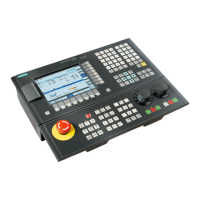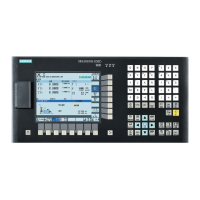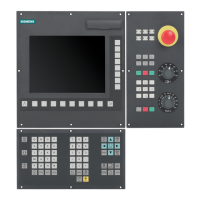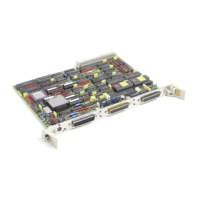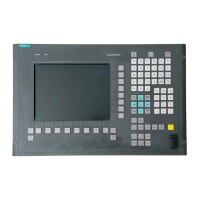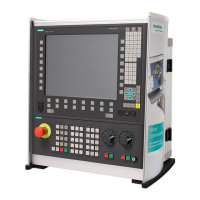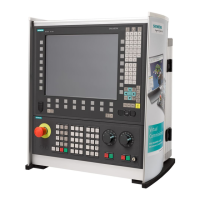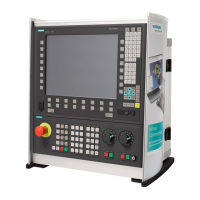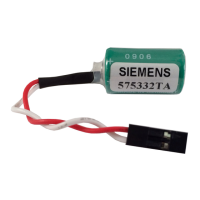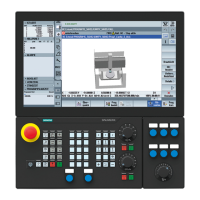Programming and Operating Manual (Milling)
152 6FC5398-4DP10-0BA6, 09/2017
If a coupled axis group is activated in the part program, the dynamic response of all coupled-motion axes is taken into
account during traversing of the leading axis to avoid overloading the coupled-motion axes.
The coupling status of an axis can be checked in the part program with the system variable: $AA_COUP_ACT[<axis>].
0 Coupled motion inactive
8 Coupled motion active
Display of distance-to-go of the coupled-motion axis for modulo rotary axes
If the leading and coupled-motion axes are modulo rotary axes, the traversing movements in the leading axis add up from n
* 360° (n = 1, 2, 3 ...) in the distance-to-go display of the coupled-motion axis until the coupling is switched off.
Example: Program section with TRAILON and leading axis B and coupled-motion axis C
; Distance-to-go display at block start:
Cycles are generally applicable technology subroutines that can be used to carry out a specific machining process, such as
drilling of a thread (tapping) or milling of a pocket. These cycles are adapted to individual tasks by parameter assignment.
Drilling cycle, drilling pattern cycles and milling cycles
You can carry out the following standard cycles by using the control system:
●
CYCLE81: Drilling, centering
CYCLE82: Drilling, counterboring
CYCLE83: Deep-hole drilling
CYCLE84: Rigid tapping
CYCLE840: Tapping with compensating chuck
CYCLE85: Reaming 1
CYCLE86: Boring
●
HOLES1: Row of holes
HOLES2: Circle of holes
CYCLE802: Arbitrary positions
●
CYCLE71: Face milling
CYCLE72: Contour milling
CYCLE76: Milling the rectangular spigot
CYCLE77: Circular spigot milling
LONGHOLE: Elongated hole
SLOT1: Groove milling pattern on a circle
SLOT2: Circumferential groove milling pattern
POCKET3: Rectangular pocket milling (with any milling tool)
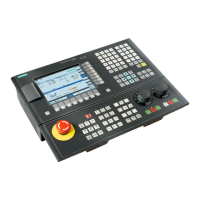
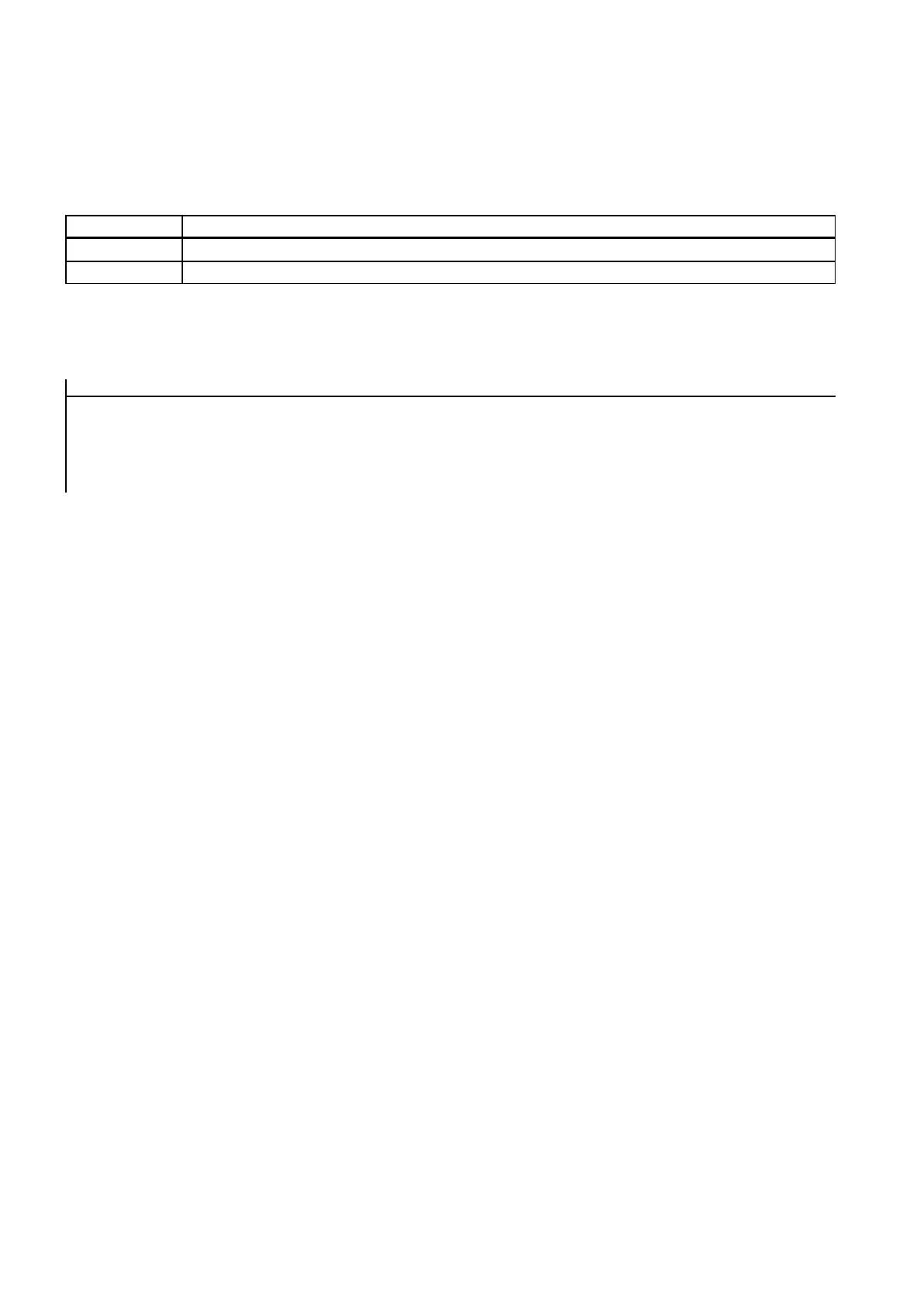